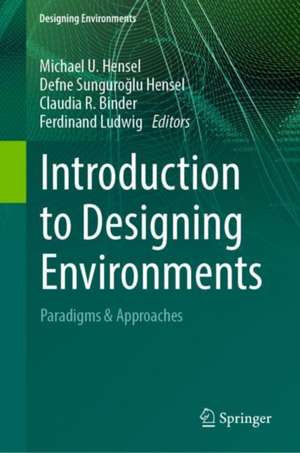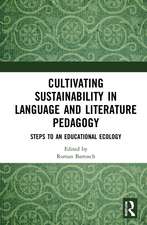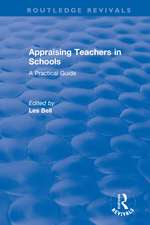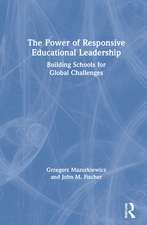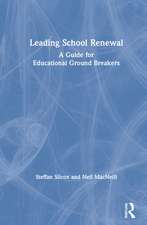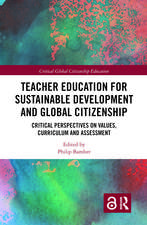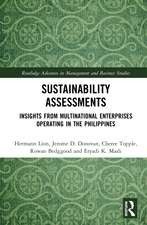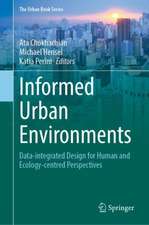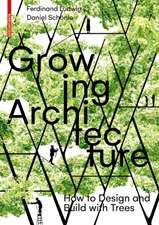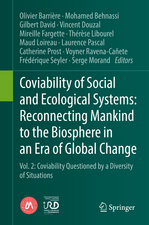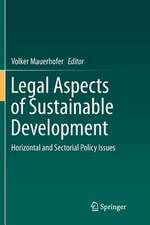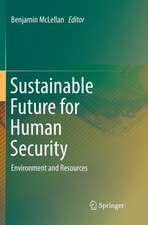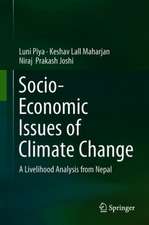Introduction to Designing Environments: Paradigms & Approaches: Designing Environments
Editat de Michael U. Hensel, Defne Sunguroğlu Hensel, Claudia R. Binder, Ferdinand Ludwigen Limba Engleză Hardback – 9 iul 2023
Volume one of the Designing Environments book series brings together experts from different disciplines and often inter- and transdisciplinary contexts, who discuss specific approaches to overcoming the negative impact of the transformation of environments by humans. Across the 12 chapters of volume one, specific keywords recur that are indicative of shared insights and concerns. These include Anthropocene, climate change, complexity, critical zone, ecosystem services, and sustainability. Furthermore, interdisciplinary approaches to human–environment interactions, sustainability transitions, and socio-ecological systems take center stage and are discussed in relation to conceptual and methodological as well as societal and technological challenges and opportunities.
Toate formatele și edițiile
| Toate formatele și edițiile | Preț | Express |
|---|---|---|
| Paperback (1) | 832.89 lei 17-23 zile | +71.33 lei 6-12 zile |
| Springer International Publishing – 10 iul 2024 | 832.89 lei 17-23 zile | +71.33 lei 6-12 zile |
| Hardback (1) | 831.77 lei 38-44 zile | |
| Springer International Publishing – 9 iul 2023 | 831.77 lei 38-44 zile |
Preț: 831.77 lei
Preț vechi: 1094.43 lei
-24% Nou
Puncte Express: 1248
Preț estimativ în valută:
159.21€ • 172.100$ • 133.82£
159.21€ • 172.100$ • 133.82£
Carte tipărită la comandă
Livrare economică 16-22 aprilie
Preluare comenzi: 021 569.72.76
Specificații
ISBN-13: 9783031343773
ISBN-10: 3031343778
Pagini: 229
Ilustrații: XIV, 229 p. 1 illus.
Dimensiuni: 155 x 235 mm
Greutate: 0.36 kg
Ediția:2023
Editura: Springer International Publishing
Colecția Springer
Seria Designing Environments
Locul publicării:Cham, Switzerland
ISBN-10: 3031343778
Pagini: 229
Ilustrații: XIV, 229 p. 1 illus.
Dimensiuni: 155 x 235 mm
Greutate: 0.36 kg
Ediția:2023
Editura: Springer International Publishing
Colecția Springer
Seria Designing Environments
Locul publicării:Cham, Switzerland
Cuprins
Chapter 1. Introduction to Designing Environments (Prof. Dr. Michael U. Hensel et. al.).- Chapter 2. Anthropocene Risks (Patrick Keyes et. al.).- Chapter 3. Complexity Science Approaches and Paradigms for Sustainability (Dr. Angela Espinosa).- Chapter 4. Knowledge & Data-integrated Approaches for Designing Environments (Dr. Cédric Pruski et. al.).- Chapter 5. Modelling the Anthropocene (Prof. Dr. Ir. Peter H. Verburg).- Chapter 6. Geodesign & Geoinformatics (Prof. Dr. Olaf Schrot).- Chapter 7. Land-use Change Modelling (Prof. Dr. Ir. Peter Verburg).- Chapter 8. Computational Landscape Ecology (Prof. Dr. Ralf Seppelt).- Chapter 9. Urban Metabolism (Prof. Dr. Vanesa Castán Broto).- Chapter 10. Socio-metabolic Transitions (Prof. Mag. Dr. Helmut Haberl).- Chapter 11. Human-Environment Interactions in Urban Systems (Prof. Paola Viganó).- Chapter 12. Climate Change and Cities (Cynthia Rosenzweig et. al.).- Chapter 13. Science of Cities: Urban Ecology (Timon McPhearson).- Chapter 14. Architectural Science: Architecture and Environment Integration (Prof. Dr. Michael U. Hensel et. al.).- Chapter 15. Towards regenerative architecture – the challenge to design ecologically positive buildings (Prof. Dr. Ferdinand Ludwig et. al.).- Chapter 16. Multi-species Perspectives in Planning and Design (Prof. Dr. Wolfgang Weisser et. al.).
Notă biografică
Prof. Dr. Michael U. Hensel is an Architect, University Professor and Head of Research Department of Digital Architecture and Planning at the Faculty of Architecture and Planning at TU Wien.
Dr. Defne Sunguroğlu Hensel is an Architect, Associate Professor for Landscape Architecture and Urban Ecology at Southeast University in Nanjing, China, and senior researcher at Technical University Munich.
Prof. Dr. Claudia R. Binder is the Dean of EPFL ENAC, University Professor and Head of the Human-Environment Relations in Urban Systems Laboratory
Prof. Dr. Ferdinand Ludwig is an Architect, University Professor and Head of Green Technologies in Landscape Architecture at the Faculty of Architecture at Technical University Munich.
Dr. Defne Sunguroğlu Hensel is an Architect, Associate Professor for Landscape Architecture and Urban Ecology at Southeast University in Nanjing, China, and senior researcher at Technical University Munich.
Prof. Dr. Claudia R. Binder is the Dean of EPFL ENAC, University Professor and Head of the Human-Environment Relations in Urban Systems Laboratory
Prof. Dr. Ferdinand Ludwig is an Architect, University Professor and Head of Green Technologies in Landscape Architecture at the Faculty of Architecture at Technical University Munich.
Textul de pe ultima copertă
The Designing Environments book series addresses questions regarding necessary environmental transformation in the context of the fast-unfolding environmental crisis. This is done from a broad interdisciplinary perspective, examining the negative impact of human transformations of the environment and providing different inroads towards sustainable environmental transformation with net positive impact.
Volume one of the Designing Environments book series brings together experts from different disciplines and often inter- and transdisciplinary contexts, who discuss specific approaches to overcoming the negative impact of the transformation of environments by humans. Across the 12 chapters of volume one, specific keywords recur that are indicative of shared insights and concerns. These include Anthropocene, climate change, complexity, critical zone, ecosystem services, and sustainability. Furthermore, interdisciplinary approaches to human–environment interactions, sustainability transitions, and socio-ecological systems take center stage and are discussed in relation to conceptual and methodological as well as societal and technological challenges and opportunities.
Volume one of the Designing Environments book series brings together experts from different disciplines and often inter- and transdisciplinary contexts, who discuss specific approaches to overcoming the negative impact of the transformation of environments by humans. Across the 12 chapters of volume one, specific keywords recur that are indicative of shared insights and concerns. These include Anthropocene, climate change, complexity, critical zone, ecosystem services, and sustainability. Furthermore, interdisciplinary approaches to human–environment interactions, sustainability transitions, and socio-ecological systems take center stage and are discussed in relation to conceptual and methodological as well as societal and technological challenges and opportunities.
Caracteristici
Focuses on sustainable development of the environment in relation to rapid urbanization and construction Initiates an approach to address the interaction between urban contexts, peri-urban and rural ones Identifies a shared paradigm based on complexity science that serves to advance an interdisciplinary approach
